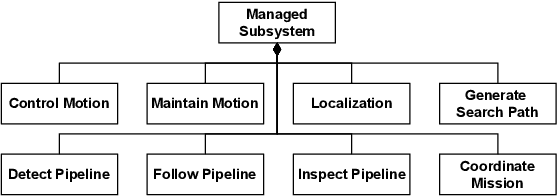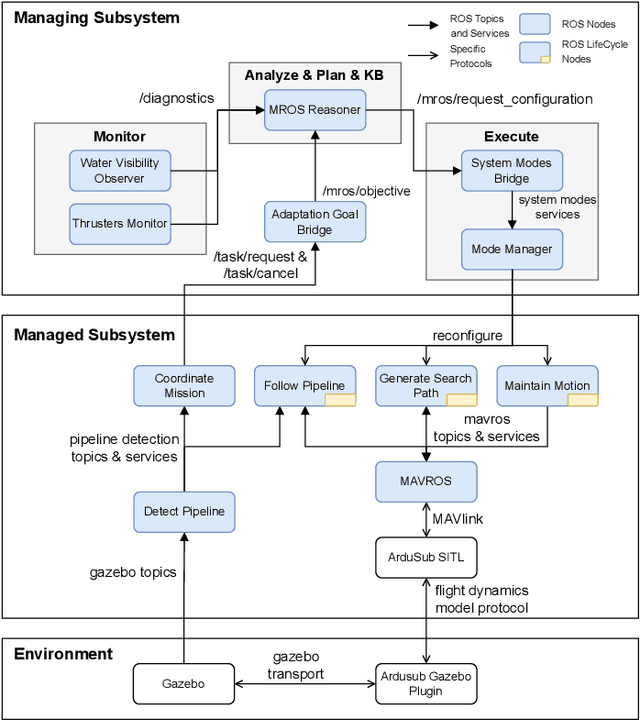S. Lizeth Tapia Tarifa
Formal Modelling and Analysis of a Self-Adaptive Robotic System
Aug 28, 2023Abstract:Self-adaptation is a crucial feature of autonomous systems that must cope with uncertainties in, e.g., their environment and their internal state. Self-adaptive systems are often modelled as two-layered systems with a managed subsystem handling the domain concerns and a managing subsystem implementing the adaptation logic. We consider a case study of a self-adaptive robotic system; more concretely, an autonomous underwater vehicle (AUV) used for pipeline inspection. In this paper, we model and analyse it with the feature-aware probabilistic model checker ProFeat. The functionalities of the AUV are modelled in a feature model, capturing the AUV's variability. This allows us to model the managed subsystem of the AUV as a family of systems, where each family member corresponds to a valid feature configuration of the AUV. The managing subsystem of the AUV is modelled as a control layer capable of dynamically switching between such valid feature configurations, depending both on environmental and internal conditions. We use this model to analyse probabilistic reward and safety properties for the AUV.
SUAVE: An Exemplar for Self-Adaptive Underwater Vehicles
Mar 16, 2023



Abstract:Once deployed in the real world, autonomous underwater vehicles (AUVs) are out of reach for human supervision yet need to take decisions to adapt to unstable and unpredictable environments. To facilitate research on self-adaptive AUVs, this paper presents SUAVE, an exemplar for two-layered system-level adaptation of AUVs, which clearly separates the application and self-adaptation concerns. The exemplar focuses on a mission for underwater pipeline inspection by a single AUV, implemented as a ROS2-based system. This mission must be completed while simultaneously accounting for uncertainties such as thruster failures and unfavorable environmental conditions. The paper discusses how SUAVE can be used with different self-adaptation frameworks, illustrated by an experiment using the Metacontrol framework to compare AUV behavior with and without self-adaptation. The experiment shows that the use of Metacontrol to adapt the AUV during its mission improves its performance when measured by the overall time taken to complete the mission or the length of the inspected pipeline.
 Add to Chrome
Add to Chrome Add to Firefox
Add to Firefox Add to Edge
Add to Edge